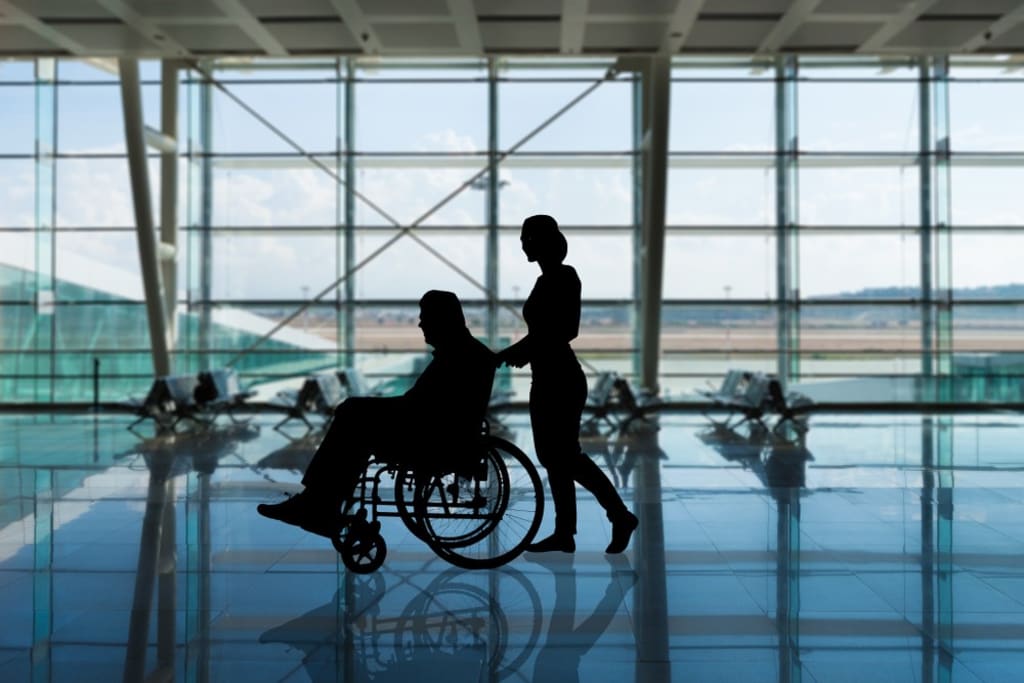
Travelling by air is an increasingly popular mode of transport with an estimated five billion passengers heading to different locations around the world last year. Whether this be for work or pleasure, air travel seems to be the new norm for when people need to get to where they need to be. Although this may be the case, travelling my air comes with many obstacles and challenges for disabled people which can leave them feel singled out from others and can cause them to be delayed in where they need to be. Examples of this can include mishandling of items such as mobility aids or having adequately trained staff that will help to ensure they have an easily accessible journey which helps to maintain high standards.
In an effort to correct these issues, a leading wheelchair accessible vehicle rental service Open Road Access recently hosted a groundbreaking webinar in collaboration with the Rights on Flights campaign. Industry leaders joined forces with accessibility advocates and members of the disabled community to form part of a practical discussion which aims to find solutions to the difficulties disabled people have when travelling by air. There were contributions from experts like Christopher Wood MBE, Martyn Sibley, and David Dew-Veal, the session aimed to shape a roadmap towards a more inclusive future.
Following the webinar, Open Road Access has developed an actionable road map which aims to do it’s utmost to improve the situation and prevent any issues of prejudice or discrimination which may arise due to lack of awareness of issues that affect the disabled community. This will help to improve equality in society and ensure everyone has the same opportunities to get around as others.
Disability inclusion and representation:
Disability inclusion and representation in the industry is crucial, as it ensures accessibility is foundational rather than an afterthought. This can be achieved by making sure disabled people are employed, included, and actively engaged in the aviation industry.
Booking and assistance coordination:
• Making all booking platforms accessible (WCAG 2.2 compliant) and enabling an electronic “passport” storing mobility information for regular passengers to streamline booking.
• Providing free travel for personal assistants and implementing seamless data sharing between airlines and airports.
At the airport:
• Implementing universal design principles in airport refurbishments and builds.
• Equipping terminals with accessible self-service kiosks, e-gates, restroom facilities. Installing changing places and service animal relief areas (SARAs) and ensuring gates feature lifts to easily transport mobility aids.
Pre-flight and boarding:
• Using photo documentation for mobility aids at check-in and prior to returning mobility aids to ensure they are returned in good condition.
• Allowing wheelchair users to stay in their chairs up to the aircraft door and prohibit handcarrying for level changes, requiring proper lifting equipment.
In-flight accommodations and accessibility:
• Equipping aircraft with on-board wheelchairs and accessible lavatories for all aircraft seating 125+ passengers.
• Providing movable armrests on aisle seats and designated seating for passengers needing to stay in their personal mobility aids.
Onward travel and disruption management:
• Implementing a “travel disruption support” program for real-time assistance during delays and cancellations.
• Ensuring accessible car rental services at airports.
There should be increased collaboration between airlines, airports and policy makers to help ensure that people who are less able then others have a quick and safe journey to their destination. Members of the public are being invited to join the fight towards a more accessible journey and do what ever they can to help improve the situation.
If you’d like to find out more about the issues affecting disabled people during air travel, you can find the take aways from the webinar at: